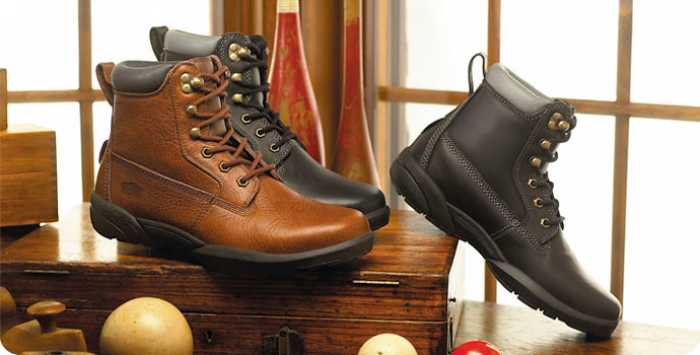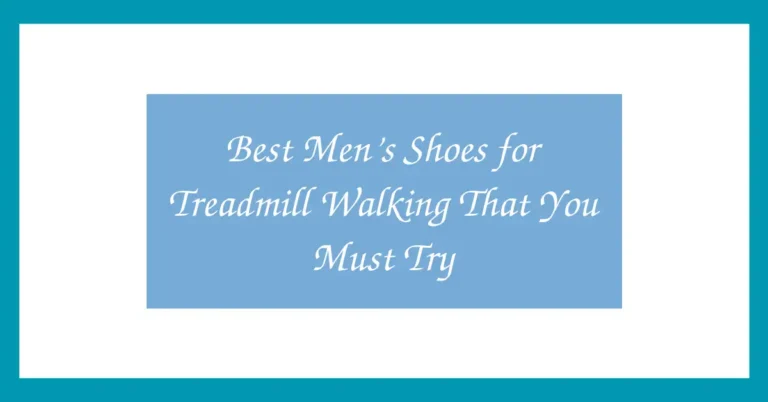10 Best Running Shoes for Ice
Running in icy conditions demands footwear that offers more than just comfort and support. The best running shoes for ice are designed to provide superior traction, warmth, and protection, allowing runners to stay safe and steady through the winter months.
Choosing the right pair can be challenging, with so many brands offering cold-weather features. From advanced grip technologies to waterproof materials, these shoes are essential for anyone serious about winter running. Below, we’ve reviewed the top 10 picks for icy conditions to help you make the best choice.
Top 10 Best Running Shoes for Ice Reviewed
1. Salomon Speedcross 6 GTX
The Salomon Speedcross 6 GTX is a trail-running shoe that excels on icy and snowy terrains. Built with the famous Contagrip® TA outsole, it offers aggressive lugs that bite into ice and compacted snow with ease. This outsole gives runners confidence on unstable ground, while the waterproof GORE-TEX® membrane keeps feet dry in wet winter conditions.
The SensiFit™ system cradles the foot from the midsole to the lacing system, creating a secure and customized fit that enhances stability. The shoe also features a Quicklace™ system for easy on and off, even with gloves. Its lightweight construction does not compromise durability, making it ideal for challenging runs in unpredictable weather.
Although originally designed for trail running, the Speedcross 6 GTX performs exceptionally well on icy sidewalks and frozen trails. The cushioning is responsive enough for longer runs, and the upper is designed to resist snow buildup, helping maintain warmth. Many winter runners appreciate its snug fit and the fact that it locks the heel in place.
This shoe is recommended for runners looking for high grip, excellent water protection, and durability on slick, frozen terrain. It may run slightly narrow, so those with wide feet should consider sizing up or trying it on before purchase.
Pros
- Exceptional grip on ice and snow
- Waterproof GORE-TEX upper
- Quicklace™ system for easy use
Cons
- Can be too narrow for wide feet
- Not ideal for dry pavement
2. Saucony Peregrine Ice+ 3
The Saucony Peregrine Ice+ 3 is specially engineered for ice and snow-covered paths. With a PWRTRAC ICE outsole, this shoe adapts to both wet and frozen surfaces, delivering secure traction without metal spikes. The outsole pattern is designed for multidirectional grip, helping prevent slips even on glassy black ice.
It features a water-resistant upper that keeps out slush while remaining breathable for longer runs. FORMFIT technology surrounds the foot with a tailored feel, ensuring that the shoe hugs your foot securely without restricting movement. The moderate cushioning gives runners a balance of comfort and responsiveness during cold-weather training.
The Peregrine Ice+ 3 also stands out for its flexibility. Unlike some winter shoes that feel stiff, this model allows for natural foot movement. Despite being lightweight, it is surprisingly warm, making it a go-to choice for those facing bitter cold or unexpected snow flurries mid-run.
Whether you’re on icy sidewalks or snow-packed trails, this shoe offers dependable performance with the added benefit of comfort. It’s suitable for runners who need versatility in winter terrain without sacrificing agility or warmth.
Pros
- Excellent grip on ice without spikes
- Water-resistant yet breathable upper
- Flexible and lightweight design
Cons
- Traction may reduce over long wear
- Less warmth than fully insulated shoes
3. Icebug NewRun BUGrip GTX
Icebug is a brand known for icy terrain solutions, and the NewRun BUGrip GTX is one of their flagship models. Equipped with 17 dynamic carbide steel studs embedded in the outsole, this shoe offers unbeatable grip on ice. The BUGrip® sole technology adjusts to different surfaces, gripping harder when needed.
Made for road runners who face frozen pavements, the NewRun BUGrip GTX is lined with GORE-TEX® for complete waterproofing. The upper is designed to keep snow and water out while retaining breathability. This shoe ensures a secure fit thanks to the ergonomic last and responsive lacing system.
It’s also built with a cushioned midsole that supports long runs in sub-zero conditions. Many runners report that the studded sole gives them the confidence to train outdoors regardless of icy forecasts. Plus, it offers reflective details for visibility during darker winter runs.
While the studs make it less suitable for indoor use or dry conditions, the grip they provide is unmatched. This shoe is perfect for runners in colder climates who prioritize traction and protection in icy conditions.
Pros
- Steel studs for superior ice grip
- Waterproof GORE-TEX lining
- Highly reflective for winter safety
Cons
- Not for dry or indoor surfaces
- Heavier than non-studded options
4. Nike Pegasus Trail 4 GORE-TEX
The Nike Pegasus Trail 4 GORE-TEX brings winter-ready features to one of Nike’s most versatile running shoes. With GORE-TEX Invisible Fit technology, it repels moisture without compromising flexibility. Designed for both trails and icy urban routes, it offers solid grip through a lugged rubber outsole.
This shoe features React foam in the midsole for plush yet responsive cushioning. The upper has been reinforced to block wind and water, yet remains breathable to avoid overheating. Runners praise the secure, sock-like fit that keeps debris and snow out effectively.
The outsole tread provides better-than-expected traction on slick surfaces, making it a reliable hybrid option for those who transition between trail and road during winter. Its modern design and comfort make it a popular choice for daily runners.
While it doesn’t include metal spikes or studs, it handles moderately icy surfaces well, especially when paired with winter running socks. This shoe is a great all-around pick for runners who value cushioning and waterproofing in colder weather.
Pros
- Waterproof and windproof upper
- Comfortable React foam cushioning
- Versatile for road and trail
Cons
- Grip not ideal for black ice
- Slightly bulkier than summer running shoes
5. La Sportiva Blizzard GTX
Engineered for extreme winter running, the La Sportiva Blizzard GTX is a high-performance shoe loaded with aggressive traction. It features 7mm lugs integrated with tungsten alloy spikes, offering one of the most secure grips available for icy conditions. The outsole is built to tackle steep, frozen trails or slick inclines with ease.
The Blizzard GTX uses a GORE-TEX® Invisible Fit membrane that keeps moisture out while preserving flexibility. The gaiter-style collar adds extra protection from snow entering the shoe, a welcome feature for those running in deep snow. The upper is durable and resists abrasions from rocks, ice, or salt.
Despite its rugged build, the shoe maintains a lightweight profile, which helps reduce fatigue on longer runs. Runners who frequently train in snow-covered regions appreciate its dependable stability and warmth. The fit is snug but adaptable, and the toe bumper protects against ice chunks and trail hazards.
It’s one of the few shoes that blends studded traction with GORE-TEX protection and advanced durability. Highly recommended for mountain runners and winter adventurers, though overkill for casual icy sidewalks.
Pros
- Built-in metal spikes for extreme grip
- Gaiter collar prevents snow intrusion
- Highly durable and protective design
Cons
- May feel overbuilt for urban runs
- Snug fit requires break-in time
6. Brooks Cascadia 17 GTX
The Brooks Cascadia 17 GTX is a trail runner adapted for wintry conditions, offering reliable stability and protection against the elements. Its TrailTack Rubber outsole grips well on icy and snowy terrain, while the GORE-TEX® Invisible Fit membrane ensures waterproofing without sacrificing comfort. The updated midsole gives runners softer, more adaptive cushioning for longer runs.
Designed to offer support on uneven and slippery surfaces, the Cascadia 17 features a Ballistic Rock Shield for underfoot protection. The upper is reinforced with abrasion-resistant overlays, making it ideal for runs through snow-covered trails or icy paths. Reflective accents boost visibility in low-light conditions.
The Cascadia has a roomy toe box, making it comfortable for runners who prefer a bit of wiggle room during cold-weather runs. Its stability features and grippy outsole make it an ideal winter trainer for varied terrain. This model also works well for hikers who need a secure, waterproof trail option.
Runners looking for a dependable, cushioned shoe with solid traction and waterproofing will find the Cascadia 17 GTX a trustworthy winter companion. It’s best suited for those who regularly encounter trail snowpack or icy gravel paths.
Pros
- Excellent trail grip with TrailTack rubber
- Waterproof GORE-TEX upper
- Comfortable cushioning and roomy fit
Cons
- Heavier than summer trail shoes
- Not as aggressive as spike-equipped models
7. Inov-8 Arctic Talon 275
The Inov-8 Arctic Talon 275 is a specialist shoe built for icy trails and snow-packed paths. It comes equipped with 14 metal spikes that are integrated into the outsole, giving it exceptional traction on the iciest terrain. Designed for fell and mountain runners, this shoe prioritizes grip and speed in severe winter conditions.
The upper is constructed from a tightly woven synthetic mesh that’s water-resistant and reinforced to handle trail debris. While not fully waterproof, it dries quickly and is breathable enough for intense efforts. The gusseted tongue prevents snow from seeping in, and the padded collar adds ankle support.
This model is low to the ground and responsive, with a firm midsole that enhances trail feel. It’s ideal for experienced runners who need maximum control and traction in treacherous winter landscapes. The minimal drop also promotes a natural stride, which many runners appreciate for technical routes.
Best for those tackling icy hills or rugged snow terrain, the Arctic Talon 275 is a performance-driven shoe that delivers elite grip. It may feel firm underfoot for some, but excels in conditions where other shoes struggle.
Pros
- Outstanding grip with metal spikes
- Lightweight and responsive
- Secure fit with reinforced upper
Cons
- Firm cushioning may not suit all runners
- Not fully waterproof
8. Adidas Terrex Agravic TR Gore-Tex
The Adidas Terrex Agravic TR GTX is a trail running shoe that transitions well to icy roads and frozen trails. Its Continental™ Rubber outsole provides impressive traction, even in wet and slick conditions. The multi-directional lugs bite into snow and ice, helping maintain control during technical descents or uphill climbs.
The shoe’s GORE-TEX® membrane blocks out water and slush while allowing internal moisture to escape. It features a secure, padded heel and forefoot cushioning to protect against cold, hard surfaces. The textile upper is durable and reinforced with synthetic overlays for extra protection.
Despite its rugged construction, the Terrex Agravic TR remains relatively light, making it suitable for long-distance winter runs. The midsole provides a balance between softness and firmness, which supports a variety of running styles. A protective toe cap adds durability and helps shield against hidden ice chunks.
This model is ideal for runners who split time between trails and icy urban streets. It provides enough grip to handle slick surfaces while remaining comfortable for road use. Its stylish design is a bonus for runners who also wear them casually in winter.
Pros
- Continental™ rubber grip performs well on ice
- Durable GORE-TEX waterproofing
- Versatile for trail and road use
Cons
- Fit may be snug for wider feet
- Less aggressive than spiked models
9. Altra Lone Peak All-Weather Mid 2
The Altra Lone Peak All-Weather Mid 2 blends hiking boot protection with running shoe agility. It’s ideal for icy trail runs or winter hikes where both grip and support are essential. This mid-height model features an eVent® waterproof bootie and Altra’s signature FootShape™ toe box for comfort in freezing conditions.
The MaxTrac™ outsole with multidirectional lugs offers dependable traction on icy or snow-covered terrain. The mid-cut collar provides ankle support and helps block out snow and debris. Its zero-drop platform promotes a natural running stride, which can be beneficial on uneven, slippery surfaces.
The midsole cushioning is soft yet stable, perfect for longer adventures. Its rock plate helps protect the foot from sharp ice or rocks beneath snow layers. Despite its bulkier appearance, the shoe maintains a surprisingly smooth ride thanks to its balanced cushioning and flexible sole.
This is a great choice for runners or hikers who need more structure and protection in icy conditions. It works well for cold weather treks, snowshoe running, or even daily winter walks.
Pros
- Excellent toe space and comfort
- Mid-cut design protects from snow and ankle rolls
- Waterproof and breathable eVent® membrane
Cons
- Heavier than standard running shoes
- Zero-drop may not suit all runners
10. ASICS Gel-Fujisetsu 3 G-TX
The ASICS Gel-Fujisetsu 3 G-TX is purpose-built for icy and wintry trail runs. It features metal spikes embedded in the outsole for superior traction on frozen ground. The SpEVA midsole delivers responsive cushioning, and the rearfoot GEL® technology absorbs impact during icy landings.
The upper uses GORE-TEX® for all-weather protection, ensuring your feet stay dry during snowy or slushy runs. The mesh and synthetic overlays are reinforced to withstand trail debris and abrasion. Its snug fit and traditional lacing system provide great lockdown, especially important when footing is compromised.
Designed for winter athletes, this shoe is best suited for competitive trail runners or those logging miles in snowy terrain. It performs exceptionally well on ice thanks to the strategically placed metal studs. The ride is smooth, stable, and ideal for runners looking to maintain pace in winter.
One of the few running shoes from a major brand with integrated spikes, the Gel-Fujisetsu 3 G-TX combines classic ASICS comfort with winter durability. It’s a solid pick for runners seeking maximum grip and performance on icy terrain.
Pros
- Studded outsole for top-tier grip on ice
- GORE-TEX protection for wet conditions
- Reliable cushioning with GEL® technology
Cons
- Not for dry or indoor use
- Break-in period needed
| Product Name | Traction Technology | Waterproofing | Weight | Best For |
|---|---|---|---|---|
| Salomon Speedcross 6 GTX | Contagrip® TA | GORE-TEX® | Lightweight | Snowy trails |
| Saucony Peregrine Ice+ 3 | PWRTRAC ICE | Water-resistant | Light | Urban icy paths |
| Icebug NewRun BUGrip GTX | BUGrip® with studs | GORE-TEX® | Moderate | Frozen roads |
| Nike Pegasus Trail 4 GTX | Lugged rubber | GORE-TEX® | Moderate | Mixed surfaces |
| La Sportiva Blizzard GTX | Spiked outsole | GORE-TEX® | Light-Mid | Mountain runs |
| Brooks Cascadia 17 GTX | TrailTack rubber | GORE-TEX® | Moderate | Winter trail runs |
| Inov-8 Arctic Talon 275 | Embedded spikes | Water-resistant | Ultra-light | Ice trails |
| Adidas Terrex Agravic TR GTX | Continental™ Rubber | GORE-TEX® | Midweight | Trail + road |
| Altra Lone Peak All-Weather Mid 2 | MaxTrac™ lugs | eVent® | Heavier | Snow treks |
| ASICS Gel-Fujisetsu 3 G-TX | Studded rubber | GORE-TEX® | Moderate | Ice-covered trails |
Best Running Shoes for Ice: Buying Guide
Traction and Grip
One of the most critical factors when buying shoes for ice is traction. Look for models that include deep lugs, rubber compounds designed for cold weather, or embedded metal studs. These features reduce your chances of slipping and improve stability on slick surfaces.
Waterproofing and Insulation
Running in winter often means facing snow, slush, or freezing rain. A waterproof membrane like GORE-TEX or eVent keeps your feet dry, while insulated or double-layer uppers help retain heat. Shoes with water-resistant coatings offer partial protection but are best for shorter runs or drier snow.
Cushioning and Midsole Design
Cold weather can make surfaces harder and more jarring. Opt for shoes with responsive yet protective cushioning to reduce impact on frozen ground. Midsoles like React foam or SpEVA balance shock absorption and ground feedback in winter runs.
Fit and Comfort
Winter running shoes should fit snugly but not tightly, leaving space for thermal socks if needed. A locked-in heel and roomy toe box help reduce foot fatigue during longer runs. Some shoes also offer gaiters or higher collars for added snow protection and support.
Weight and Flexibility
While winter shoes tend to be heavier due to extra features, the best options balance weight with performance. Look for lightweight materials that don’t compromise warmth or grip. Flexible soles allow natural foot motion, improving comfort on varied surfaces.
Reflective Details and Safety
With shorter daylight hours, visibility becomes crucial. Shoes with reflective strips or bold accents enhance safety during early morning or evening runs. Some models also include bright colorways or 360° reflectivity for better visibility in low-light conditions.
FAQ
Can I use trail running shoes for icy roads?
Yes, trail running shoes with aggressive lugs or special winter outsoles work well on icy roads. However, for the best grip, shoes specifically designed for ice—often with embedded studs are more effective.
Are metal spikes necessary for running on ice?
Not always, but they significantly improve traction on black ice and steep frozen trails. If you run in areas where roads or paths are frequently frozen, studded shoes offer a safer option. For light snow, lugged rubber soles might suffice.
Do I need waterproof shoes for winter running?
Waterproof shoes are essential for snowy, slushy, or rainy winter conditions. GORE-TEX and eVent linings keep your feet dry and warm, allowing you to run comfortably in challenging weather. However, they can be less breathable than non-waterproof models.
How should winter running shoes fit?
Winter shoes should fit snugly to prevent movement inside the shoe, which can cause blisters. Make sure there’s enough space for thicker socks without making the shoe feel too tight. A secure heel and stable midfoot are key to avoiding slippage on ice.
Can I use my regular running shoes with traction devices?
Yes, traction devices like Yaktrax or microspikes can be fitted onto standard running shoes. However, they may affect comfort and performance on mixed surfaces. Shoes designed specifically for ice typically offer better integrated traction and stability.
Are zero-drop shoes good for winter running?
Zero-drop shoes like those from Altra can be effective if you’re used to that running style. They encourage a natural gait, which can improve balance on slippery ground. Just make sure the shoe offers enough protection and insulation for winter conditions.
Verdict
The best running shoes for ice combine grip, warmth, and weather resistance to ensure safe and enjoyable winter runs. Whether you’re tackling frozen trails or icy sidewalks, there’s a shoe tailored to your needs. Choose based on your terrain, comfort preferences, and climate severity to stay active year-round.







